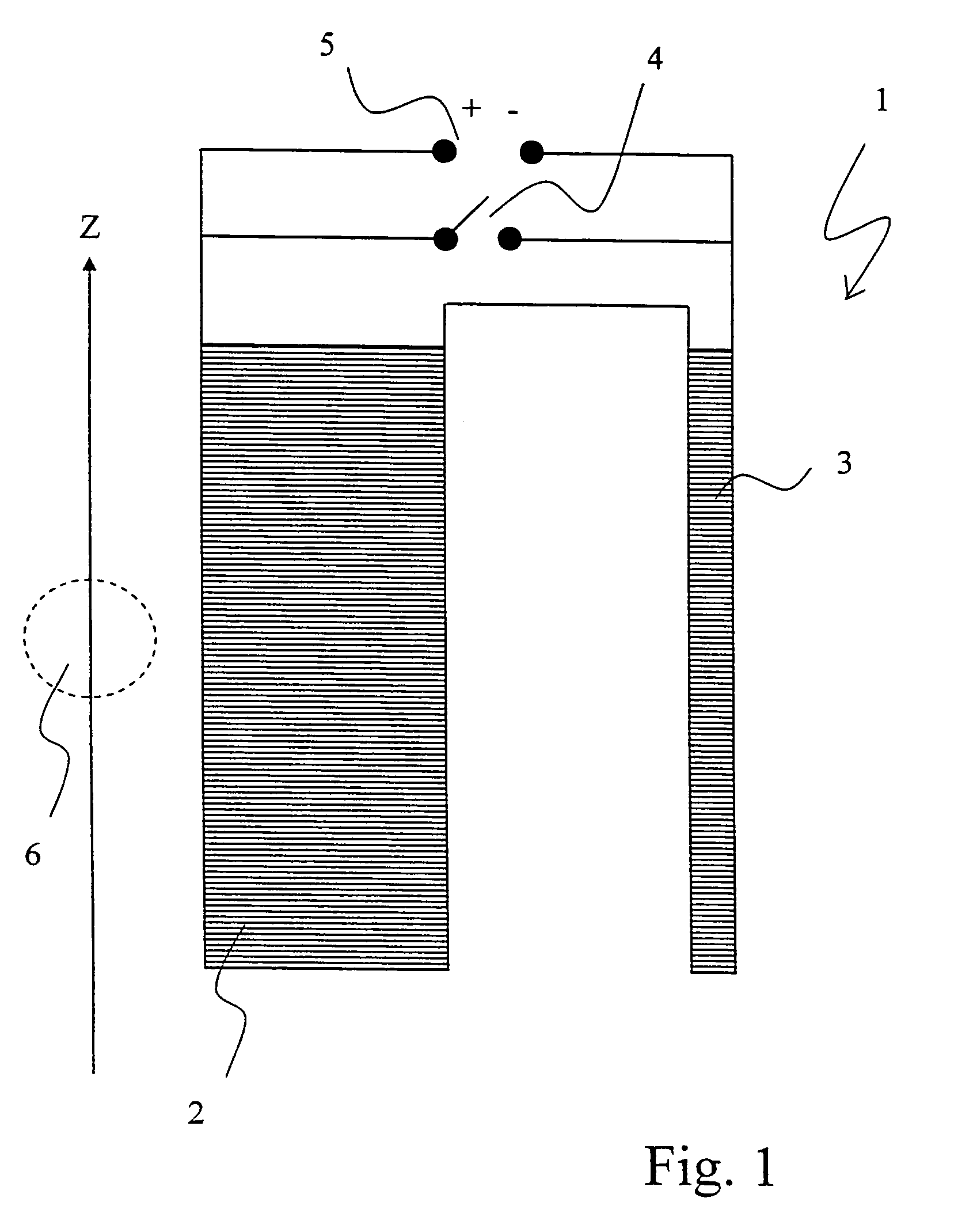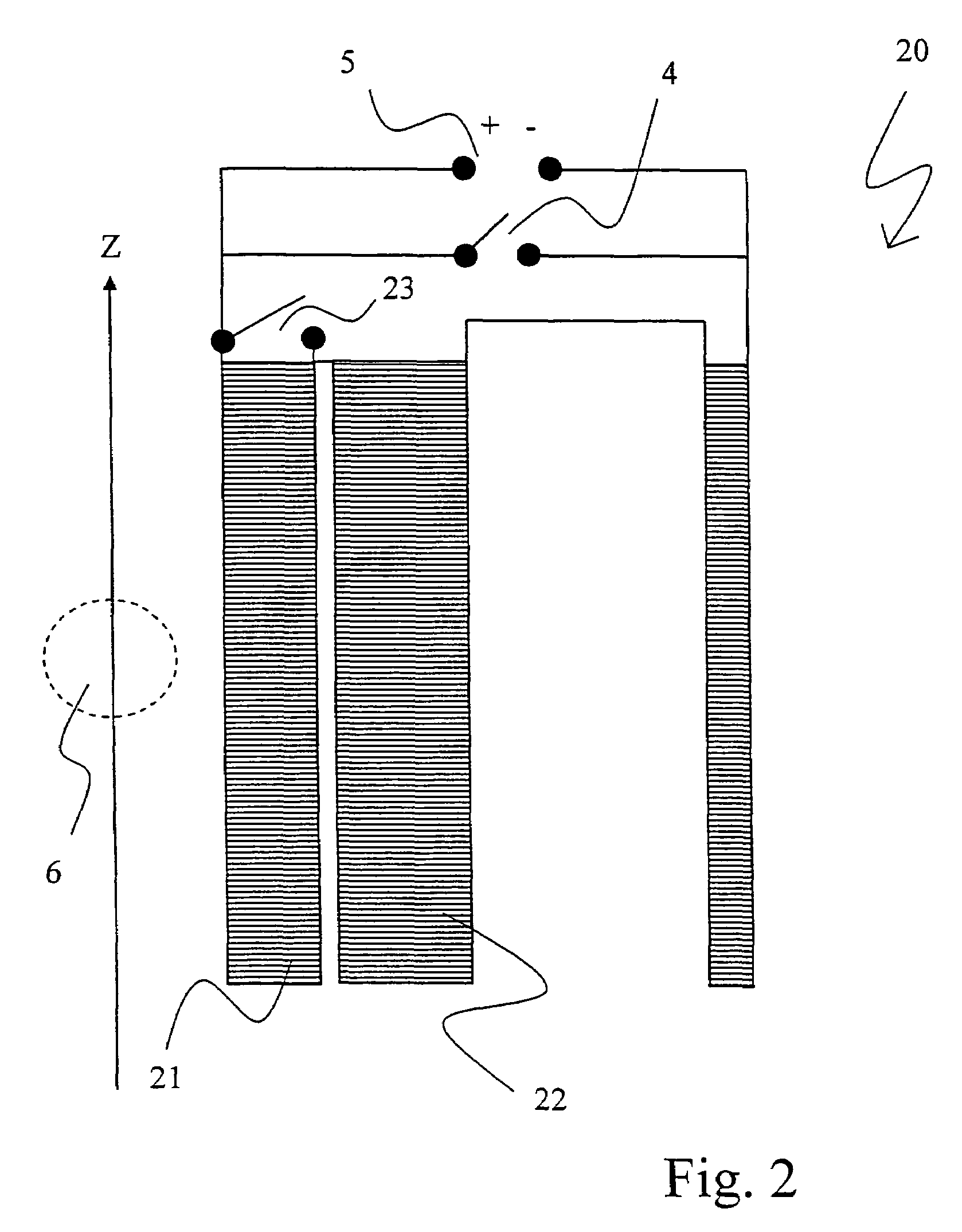Method for testing a superconductor under increased current load in a series-produced and actively shielded superconducting NMR magnet
a superconducting nmr magnet and increased current technology, which is applied in the direction of superconducting magnets/coils, geological measurements, and using reradiation, etc., can solve the problems of unacceptably large, high cost, and high cost of magnet windings required to achieve the required field, so as to facilitate the setting of the current in the superconductor to be tested and facilitate the effect of magnet coil configuration
- Summary
- Abstract
- Description
- Claims
- Application Information
AI Technical Summary
Benefits of technology
Problems solved by technology
Method used
Image
Examples
Embodiment Construction
[0031]NMR (nuclear magnetic resonance) spectroscopy methods must meet extremely high demands with regard to the temporal stability of the measured resonance frequency and therefore the temporal stability of the magnetic field of the superconducting magnet coil configuration having the sample to be investigated in its center, whose resonance frequency is proportional to the magnetic field. The specified temporal frequency stability for a 18.9 Tesla magnet with a resonance frequency for hydrogen nuclei of 800 MHz is e.g. 8 Hz / h.
[0032]In order to obtain this stability, the coils of these NMR magnets must be wound with superconducting wire and be operated in the short-circuit mode (“persistent mode”). In order to guarantee this high temporal stability, the superconducting wires (superconductors) in the magnetic field of the magnet coil configuration may not be excessively loaded. The magnet current for the magnetic field in which the superconductor is operating, must not be excessively ...
PUM
 Login to View More
Login to View More Abstract
Description
Claims
Application Information
 Login to View More
Login to View More - R&D
- Intellectual Property
- Life Sciences
- Materials
- Tech Scout
- Unparalleled Data Quality
- Higher Quality Content
- 60% Fewer Hallucinations
Browse by: Latest US Patents, China's latest patents, Technical Efficacy Thesaurus, Application Domain, Technology Topic, Popular Technical Reports.
© 2025 PatSnap. All rights reserved.Legal|Privacy policy|Modern Slavery Act Transparency Statement|Sitemap|About US| Contact US: help@patsnap.com



